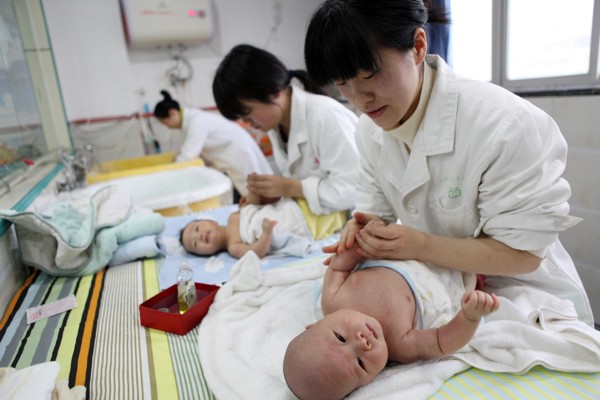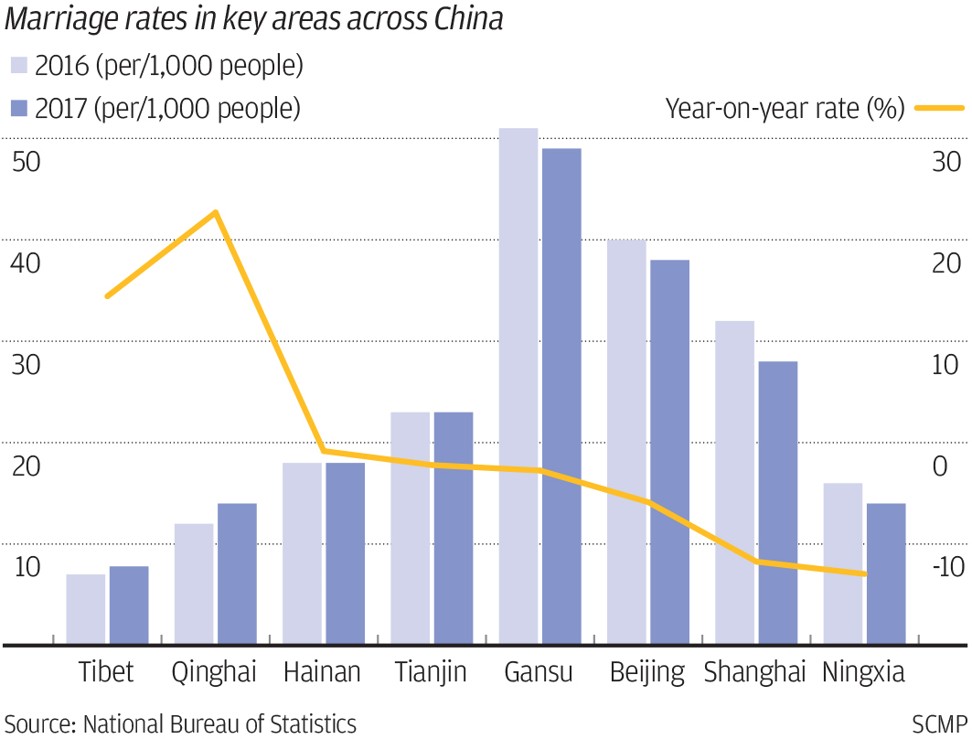
China’s ageing population problem worsens as birth and marriage rates fall
Demographer puts lower birth rate down to a drop in the number of women at childbearing age
China’s ageing society problem appears to be worsening, with the latest official statistics revealing that both its birth and marriage rates have dropped significantly.
The country is facing huge challenges with its new births in decline and a quarter of the population expected to be aged over 60 by 2030, according to a cabinet plan.
Its rapidly ageing population pushed Beijing to end the notorious one-child policy – introduced in 1979 to control population growth – in 2016, and couples can now have two children.
But despite the new policy, some 17.58 million babies were born in mainland China last year, compared to the 241 million people aged over 60, Xinhua reported on Sunday, citing the latest National Health Commission figures.
China’s aggressive population drive comes at a cost
The birth rate fell to 12.43 births per thousand people last year – down from a record high of 12.95 in 2016. Fifty-one per cent of those newborns were not the first child in their families, the report said.

Demographer Chen Youhua from Nanjing University said the lower birth rate was mainly to do with a drop in the number of women at childbearing age – a population structure resulting from the low birth rate in the 1990s.
He said other factors such as delaying marriage and a reluctance to have children also played a role, but would have a limited impact for now, though more obvious change would be seen in a decade.
There have been calls for Beijing to allow couples to have as many children as they want, a move Chen said would respect basic human rights but would not encourage people to have bigger families.
Chinese couples might be paid to have more children, report says
He also doubted whether proposed tax incentives to boost the birth rate would work either.
“The Chinese focus on education means the costs involved in helping parents to raise more children would be too much for the state, and for society. These sort of measures are more about showing the government’s attitude towards encouraging people to have children – they won’t help much to improve the population structure,” Chen said.

Meanwhile, across the country, 3 million couples registered their marriages with the Ministry of Civil Affairs in the first quarter, down from nearly 4.3 million in the same period of 2013 – a substantial decline of 30 per cent.
The declining marriage rate was most acute in Ningxia, one of China’s poorest regions, last year, where it fell by almost 13 per cent from 2016. Shanghai saw the second biggest drop, at 12 per cent.
Measures that have been floated to address the low birth rate include introducing a child allowance as part of the country’s tax reforms.
Beijing has proposed raising the minimum threshold for personal income tax from 3,500 yuan (US$520) per month to 5,000 yuan (US$750) to boost domestic consumption, and many demographers say a child allowance should also be introduced.
“I recently suggested to the National People’s Congress that as part of our nationwide tax reform, parents should be eligible for a tax reduction of 1,000 yuan for every child,” said Huang Kuangshi, a researcher at the China Population and Development Research Centre, during a question-and-answer session on Thepaper.cn.
How an ageing society can be a Hong Kong success story – if it is planned for carefully and creatively
China’s ageing problem is particularly severe in the traditional heavy industrial areas in the northeast – Liaoning, Heilongjiang and Jilin provinces – according to earlier statistics bureau data.
In Liaoning, more than 20 per cent of the population was aged over 60 last year, and the local government last week introduced a long-term plan to encourage young couples to have a second child and older workers to put off retirement or start their own business.
Huang also suggested the birth rate could be boosted by bringing in three years of maternity leave for all new mothers, which he said would also help with children’s early education.
“I believe maternity leave and other related benefits are the most pressing problems around this issue that [the authorities] need to address,” he said.



